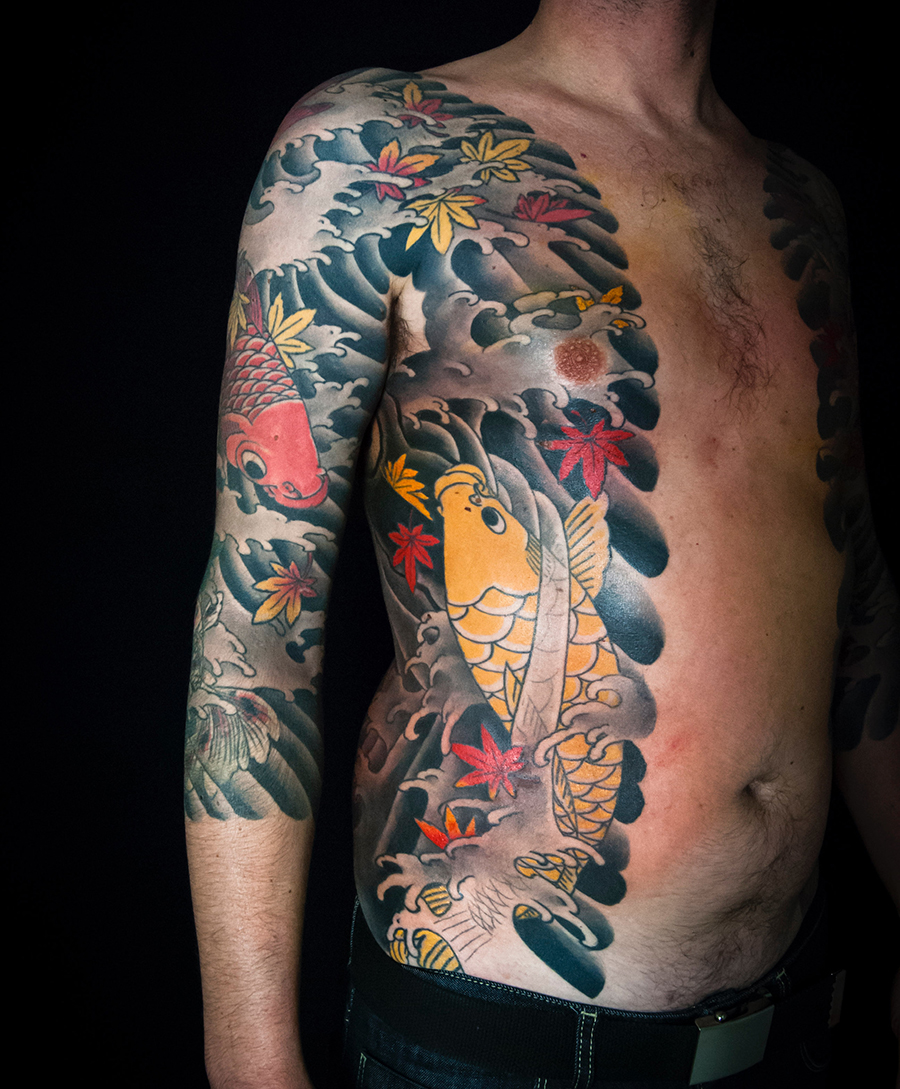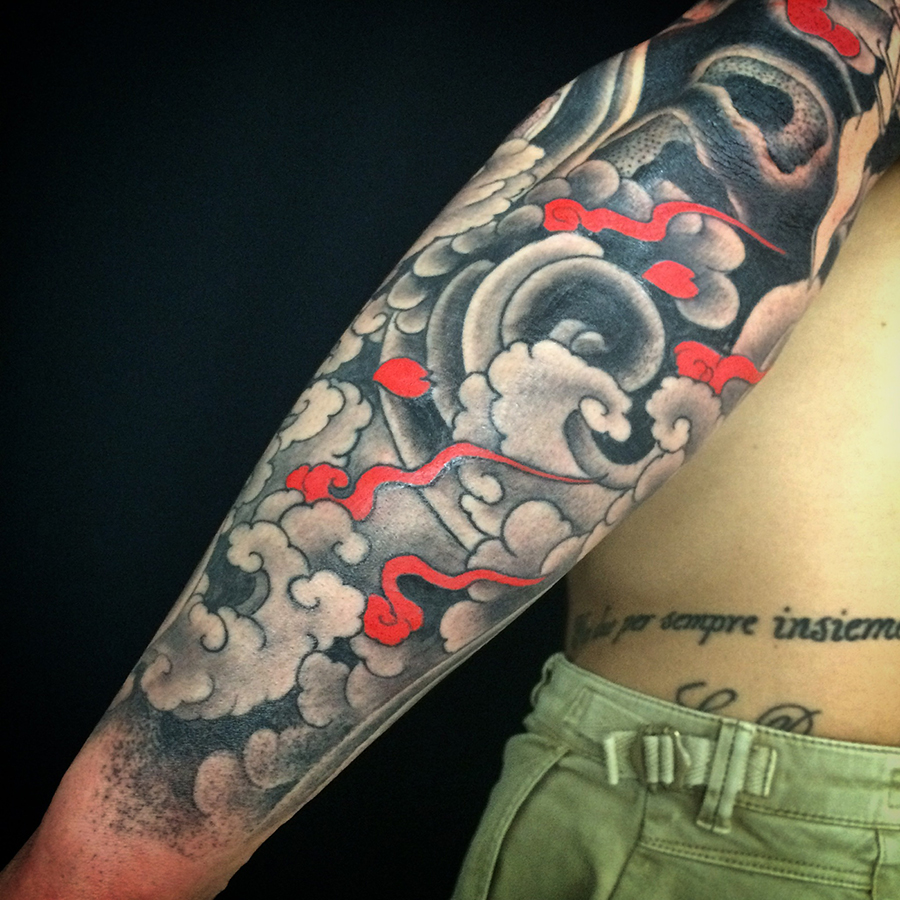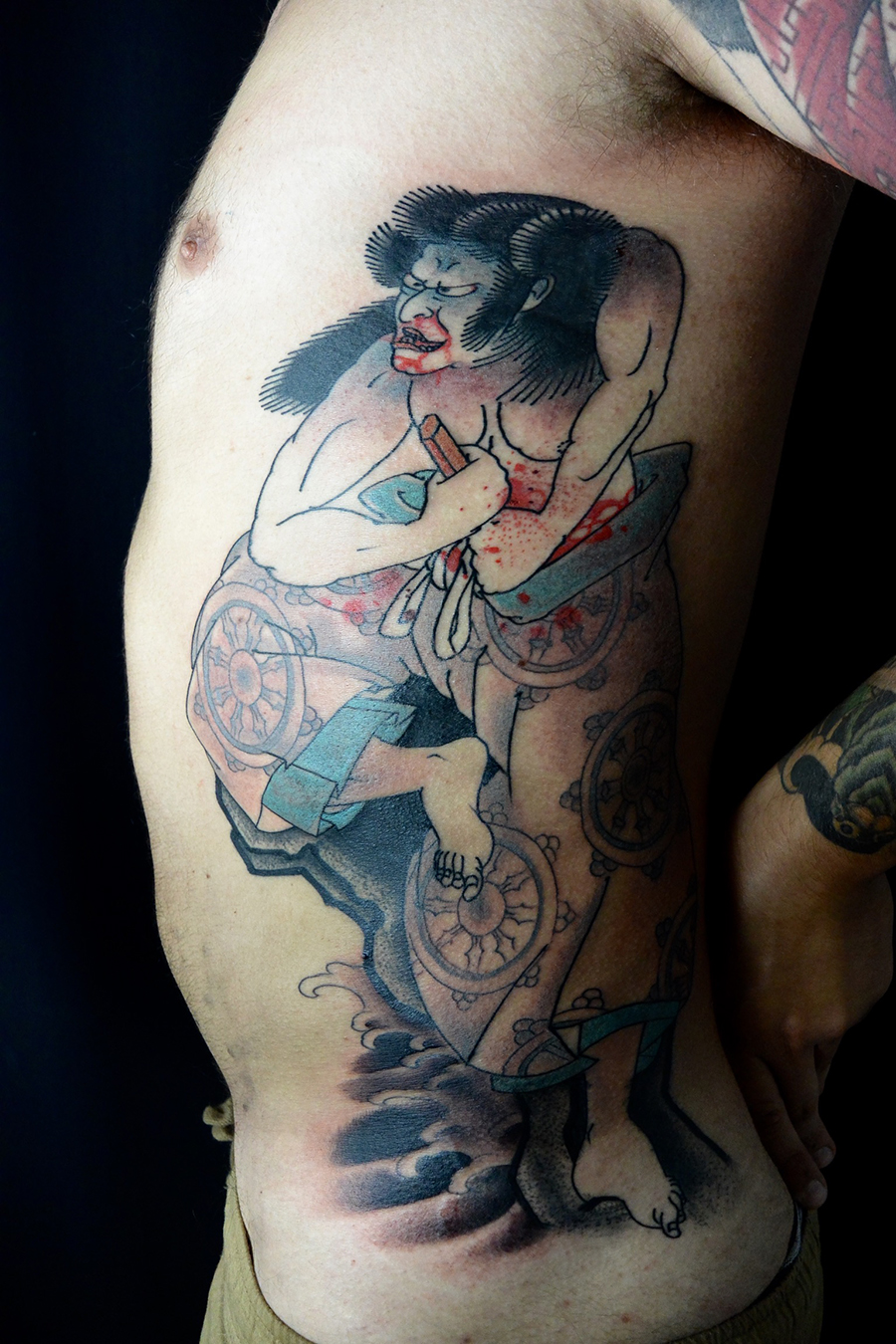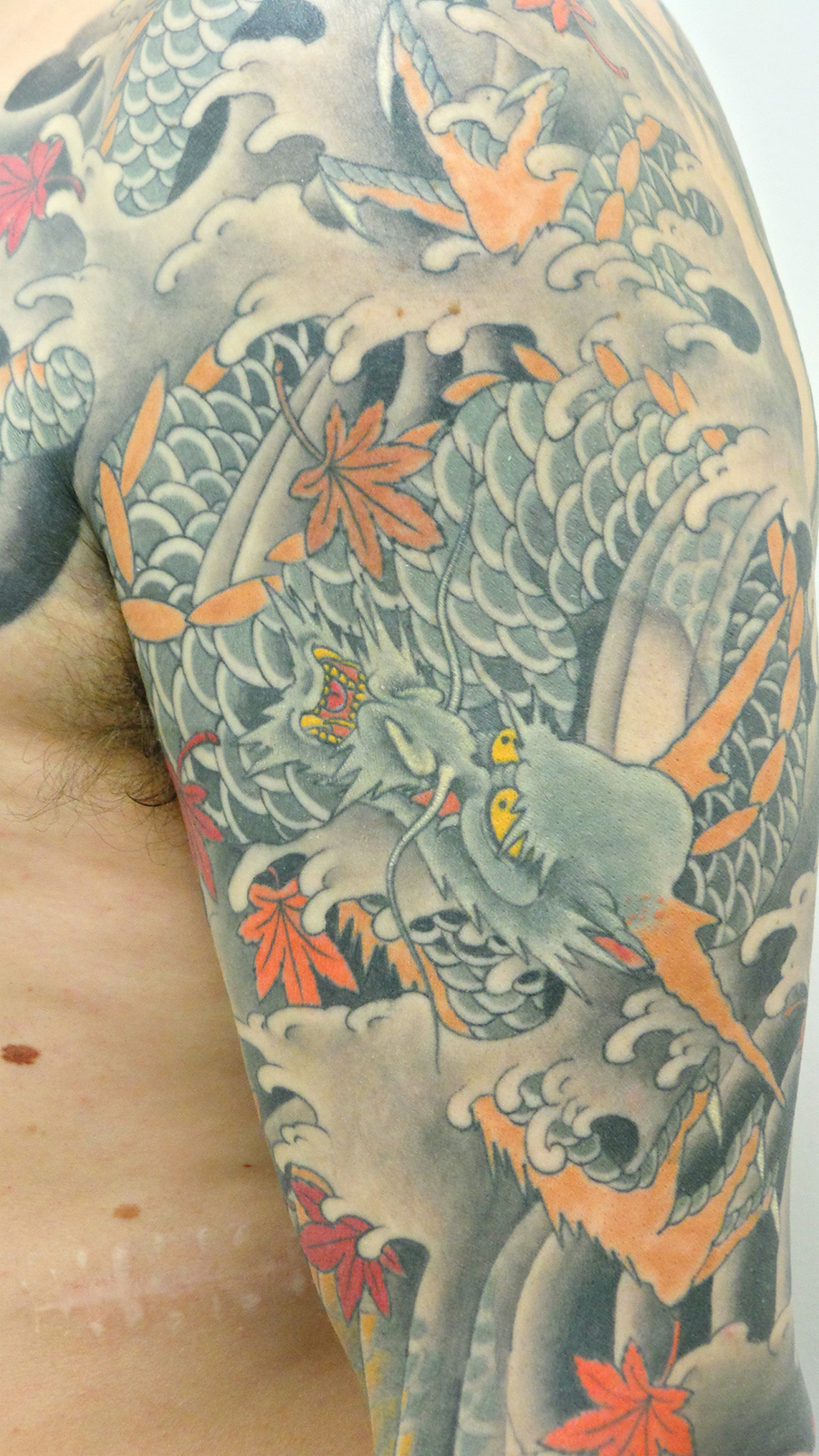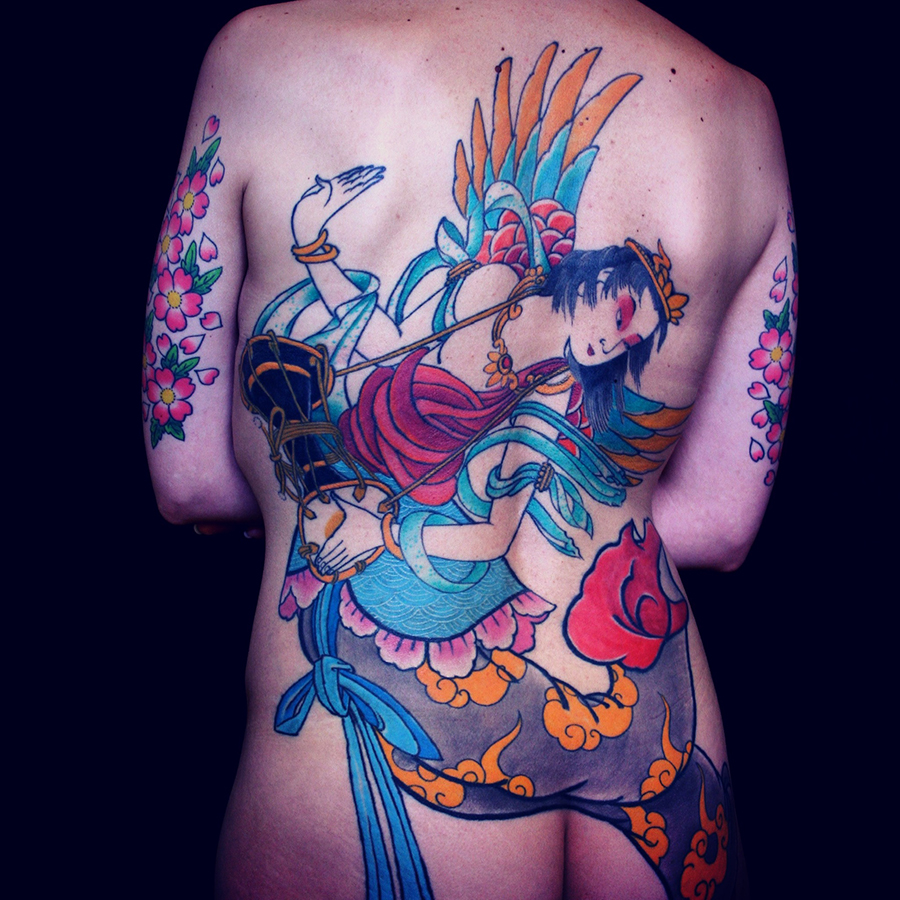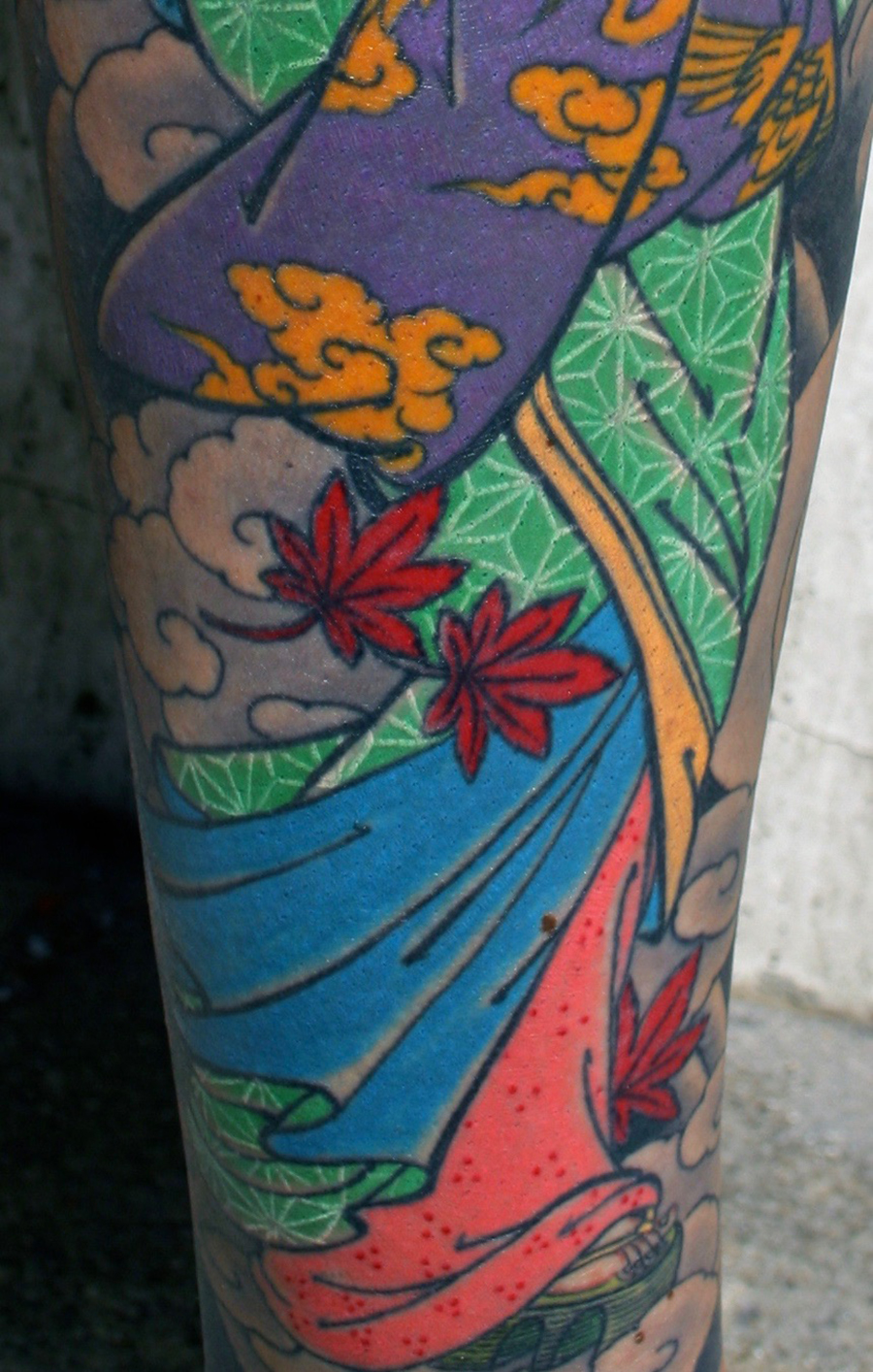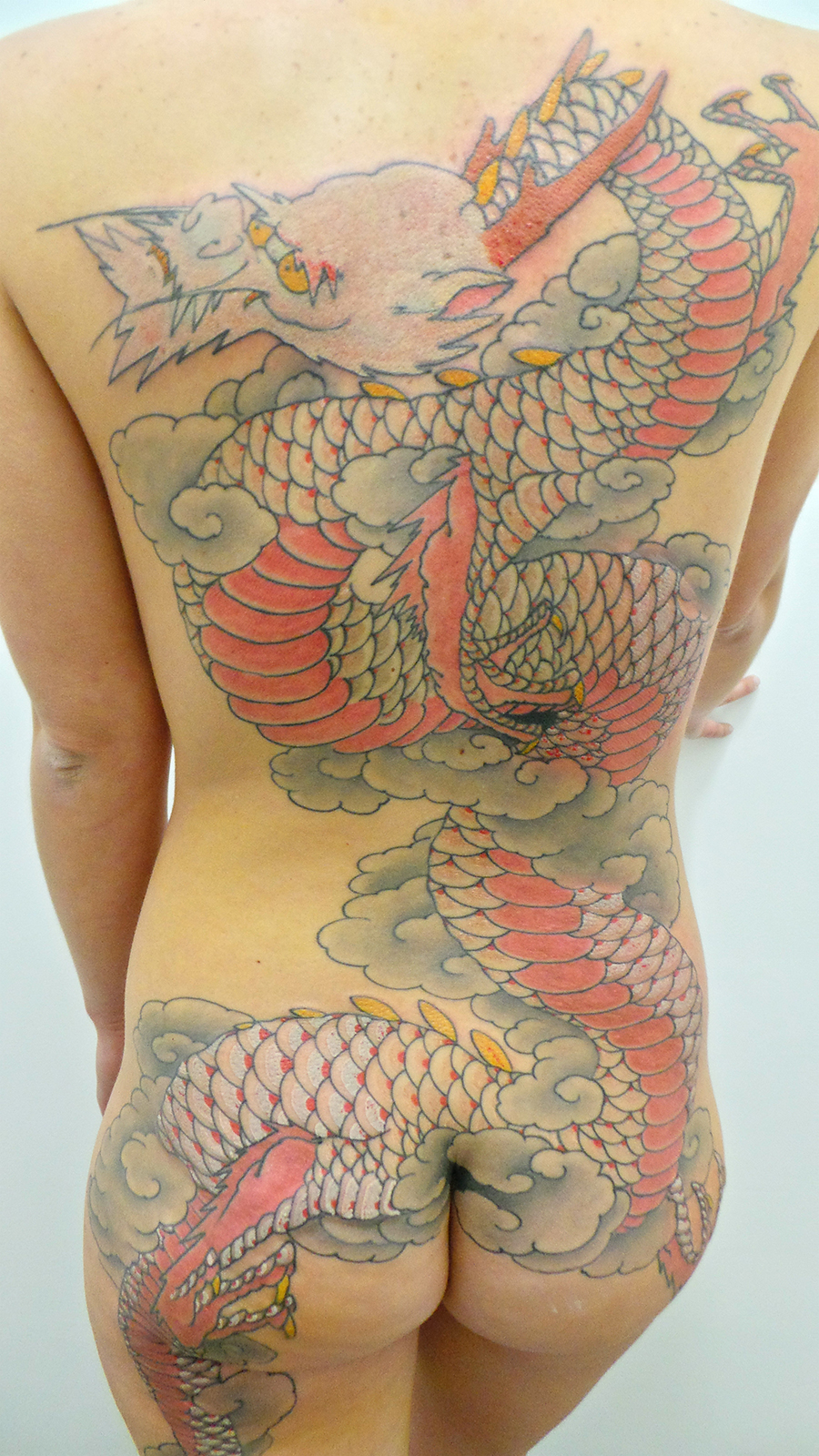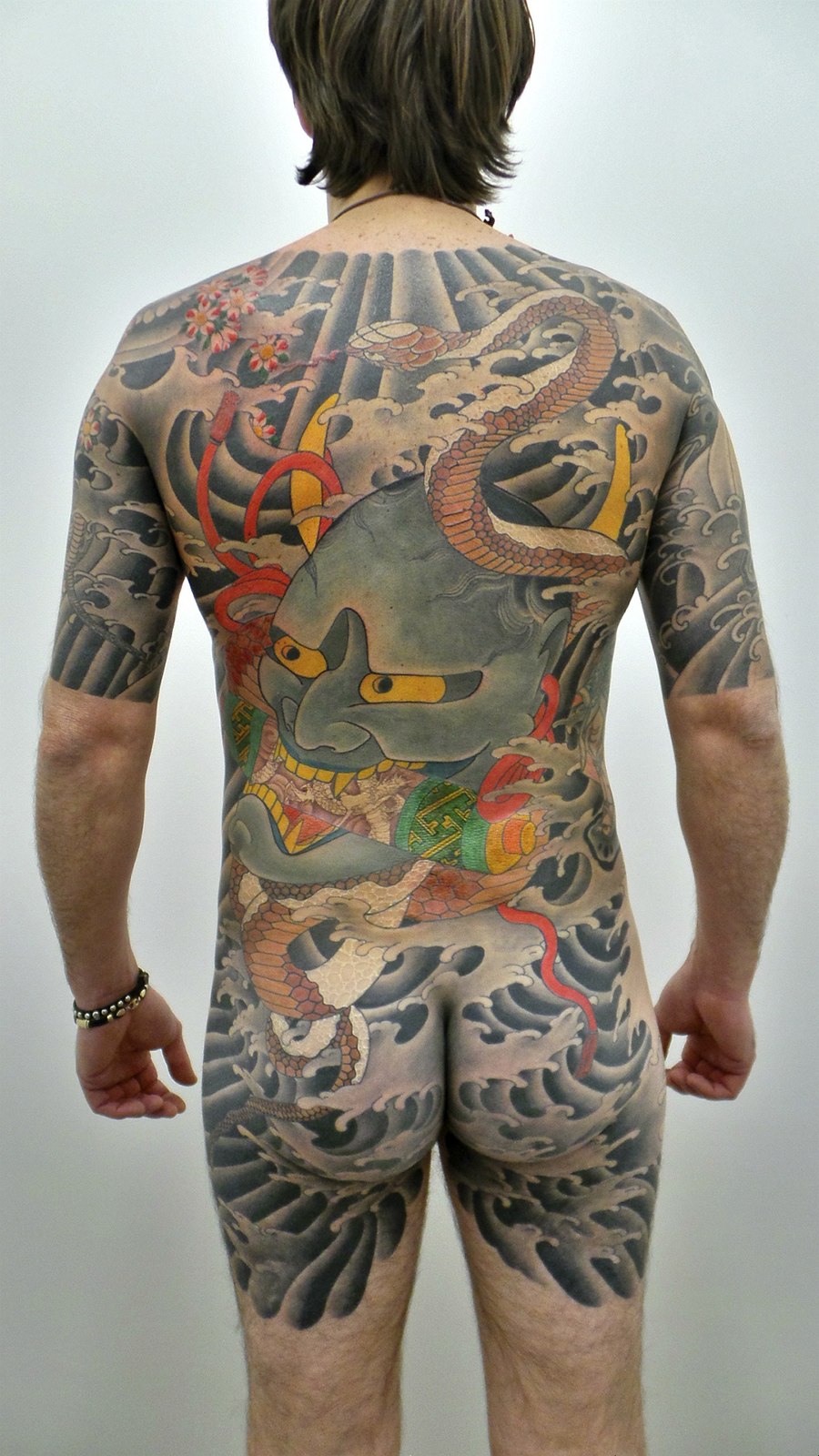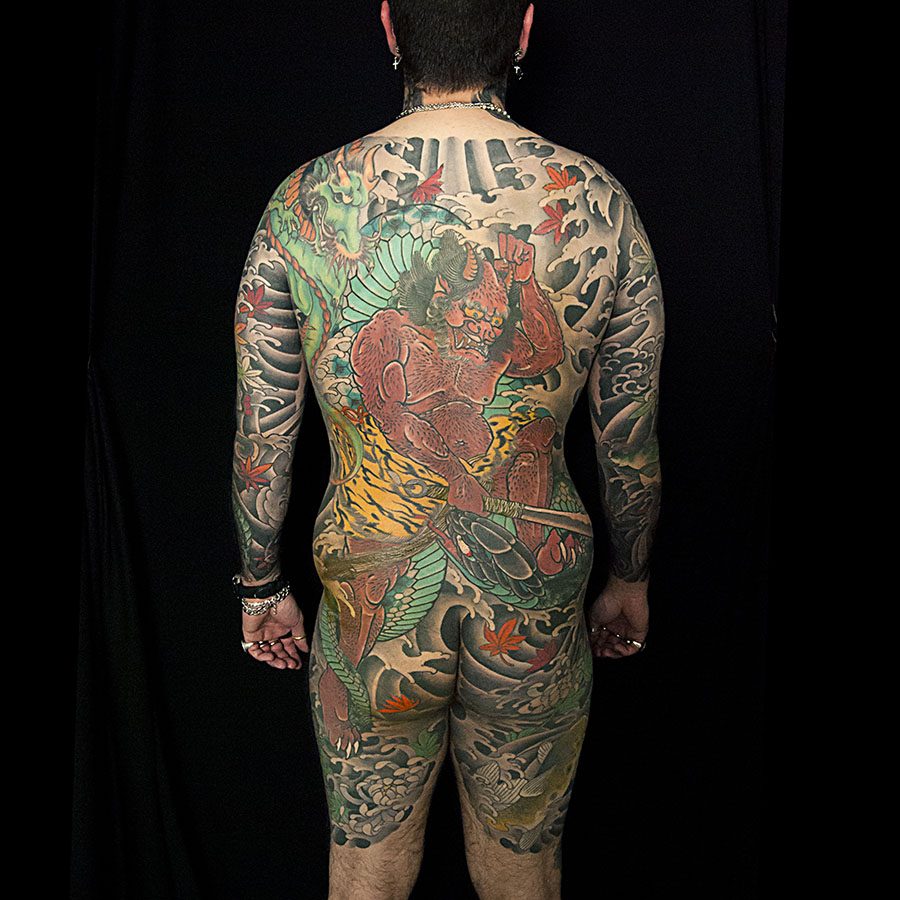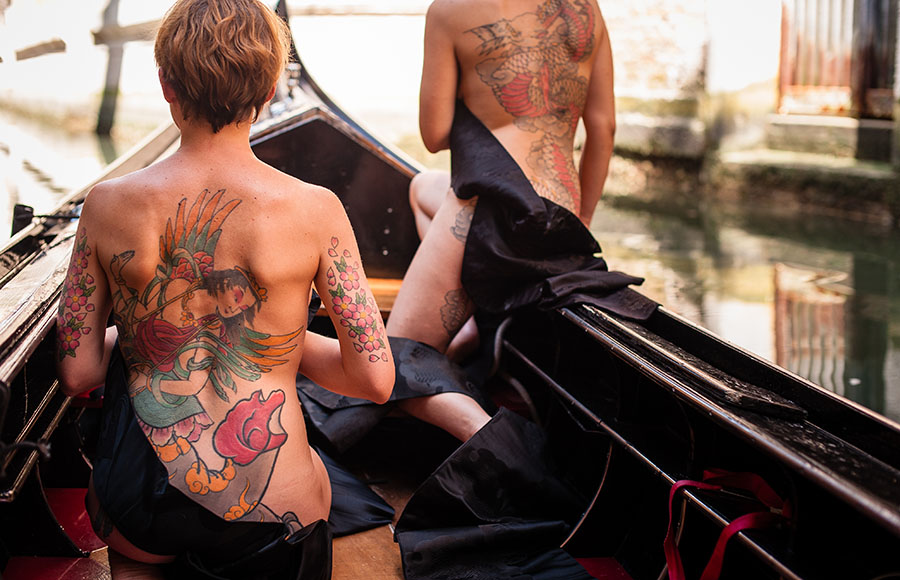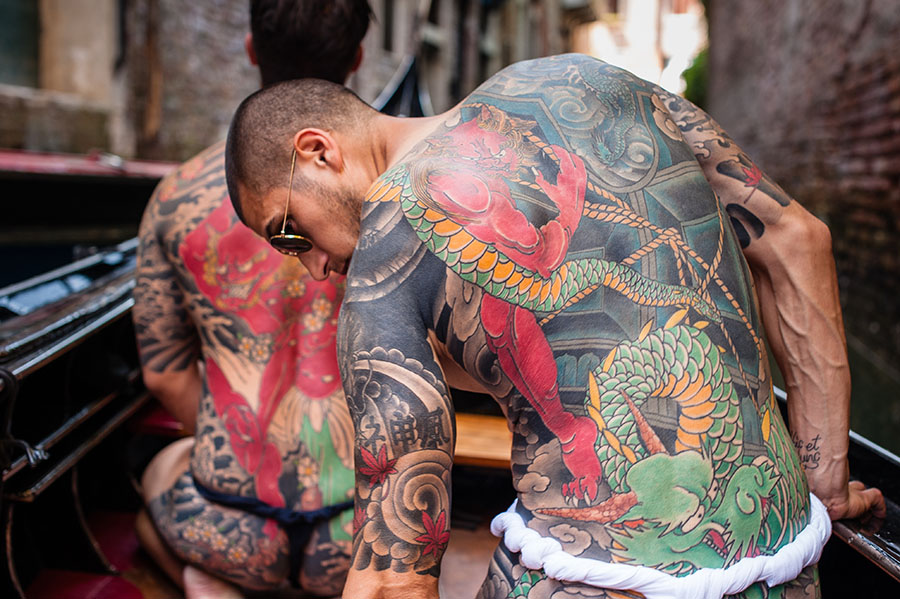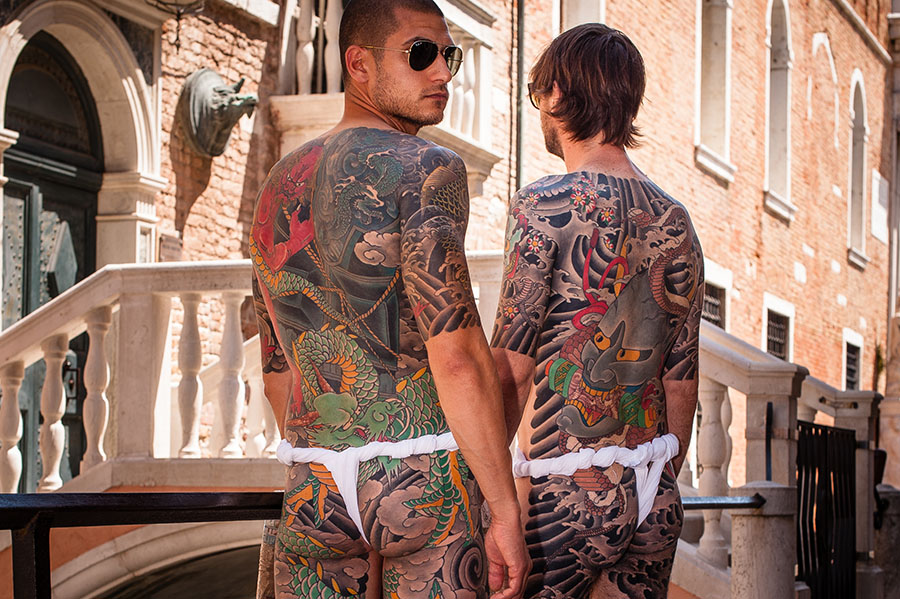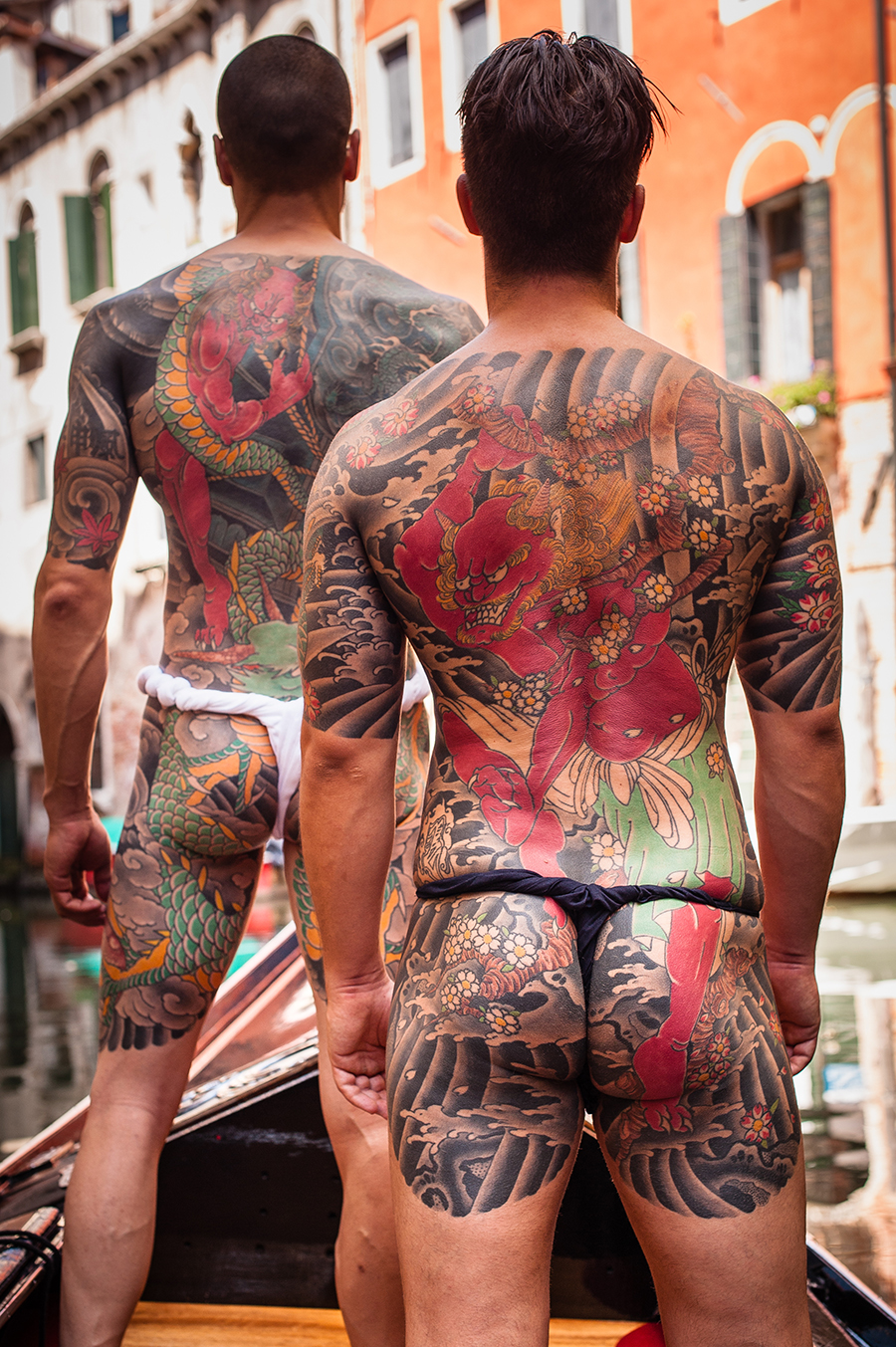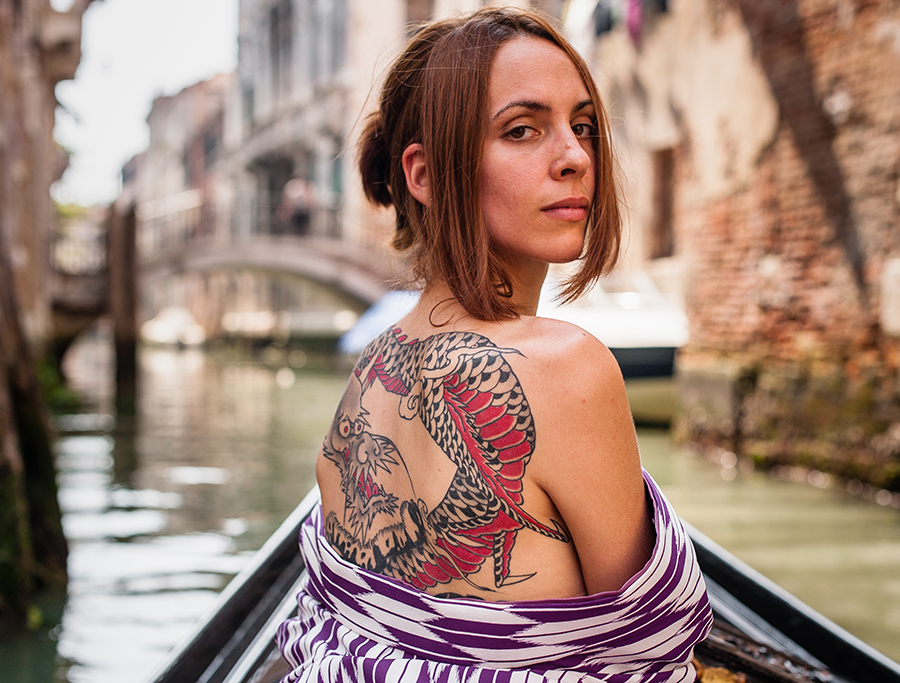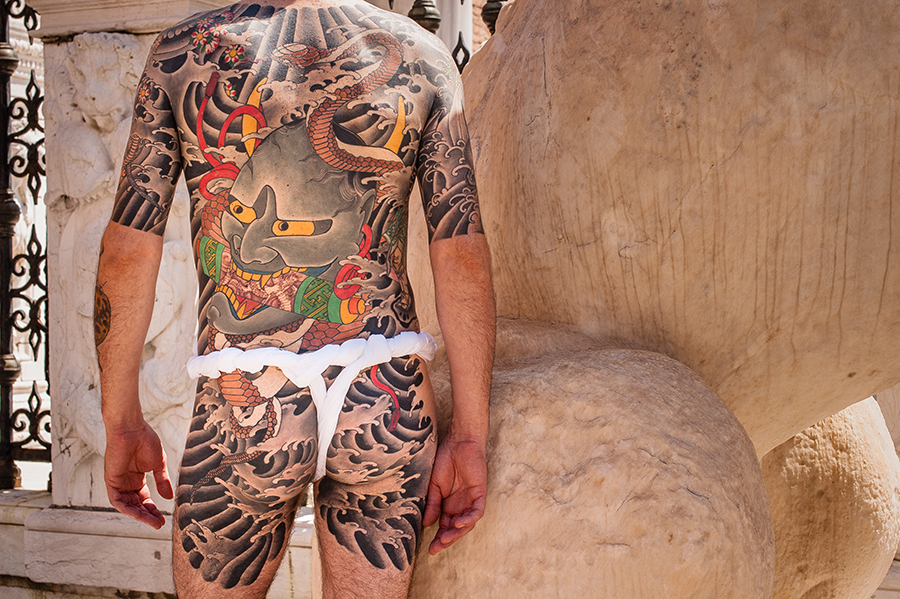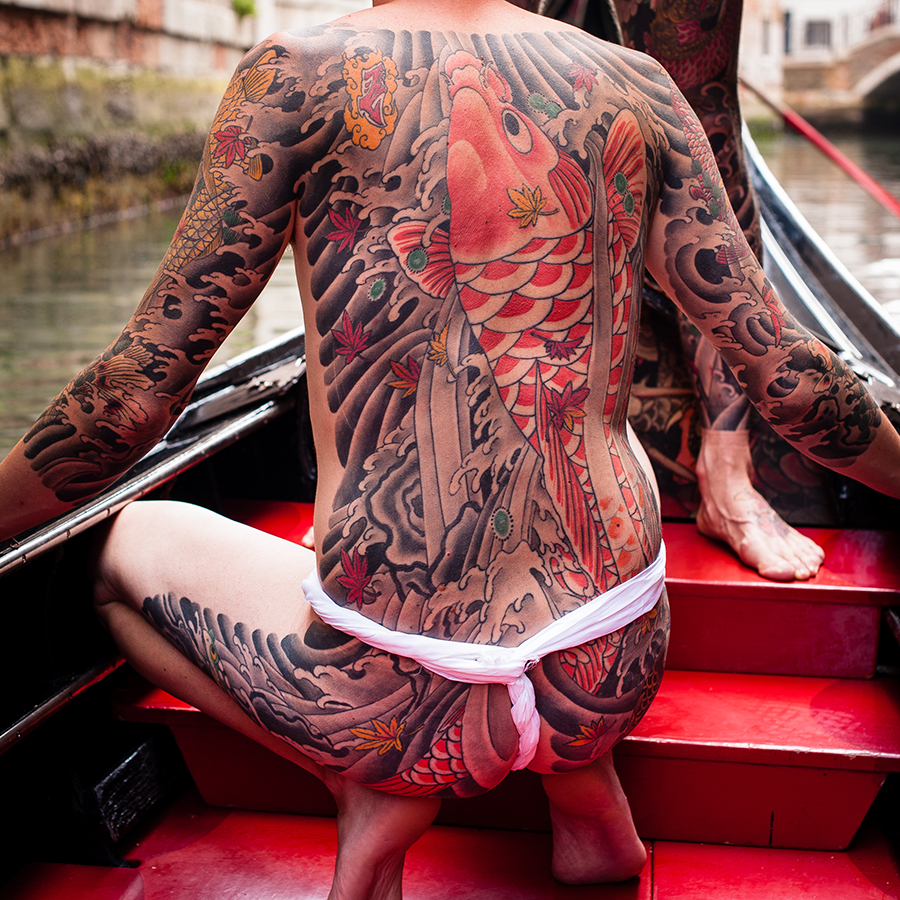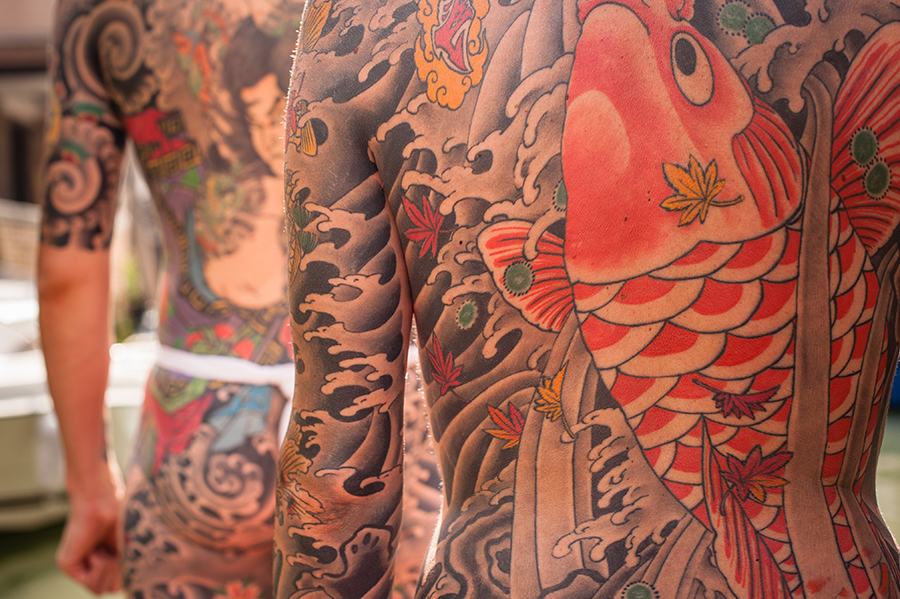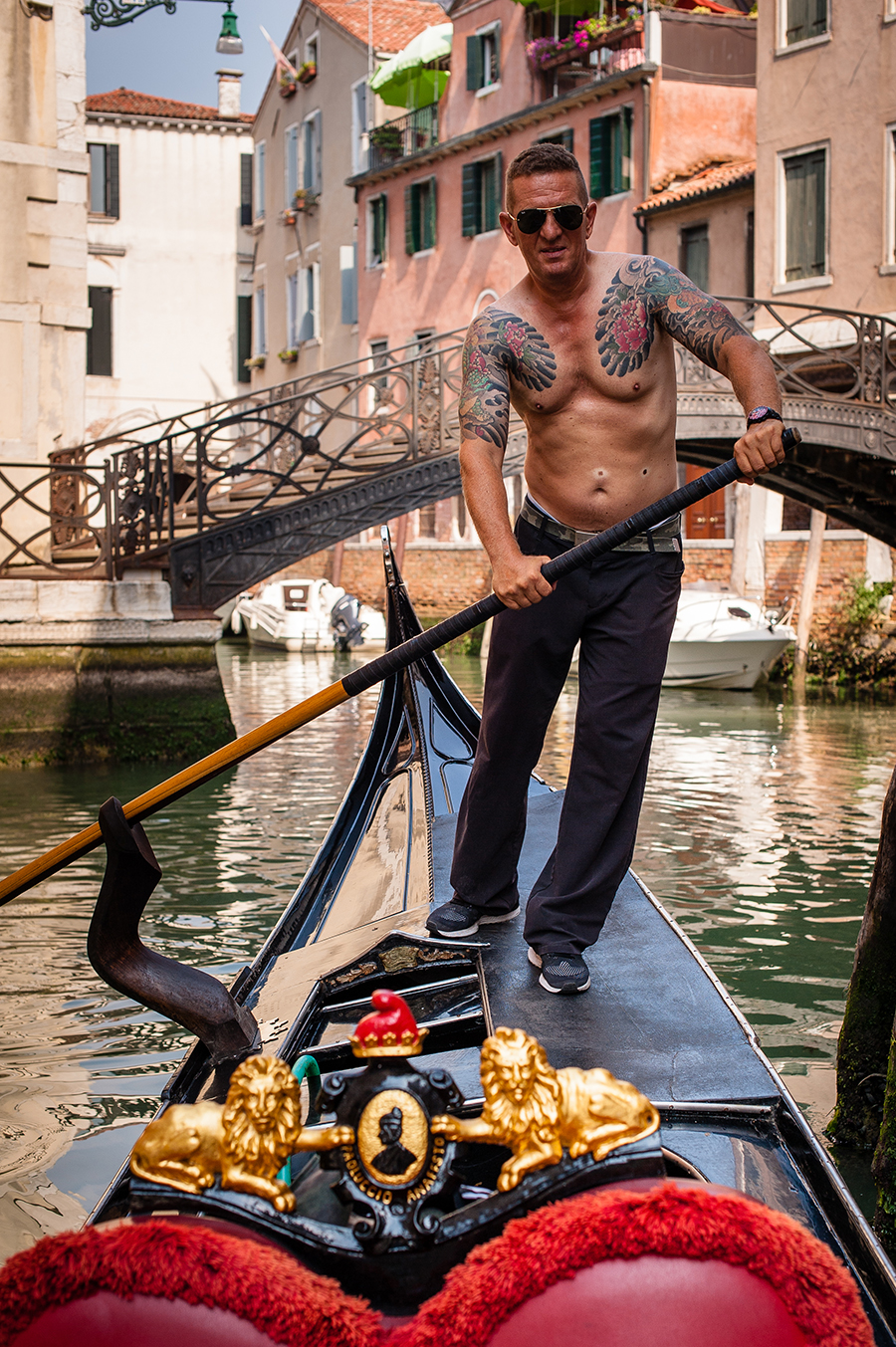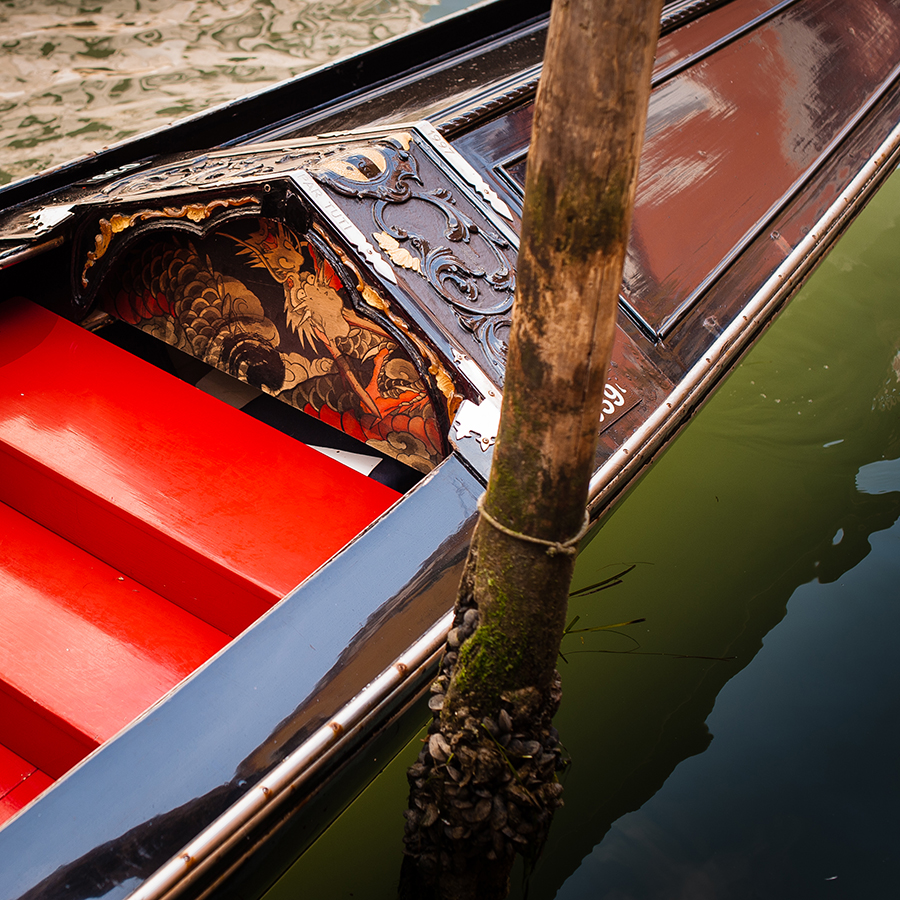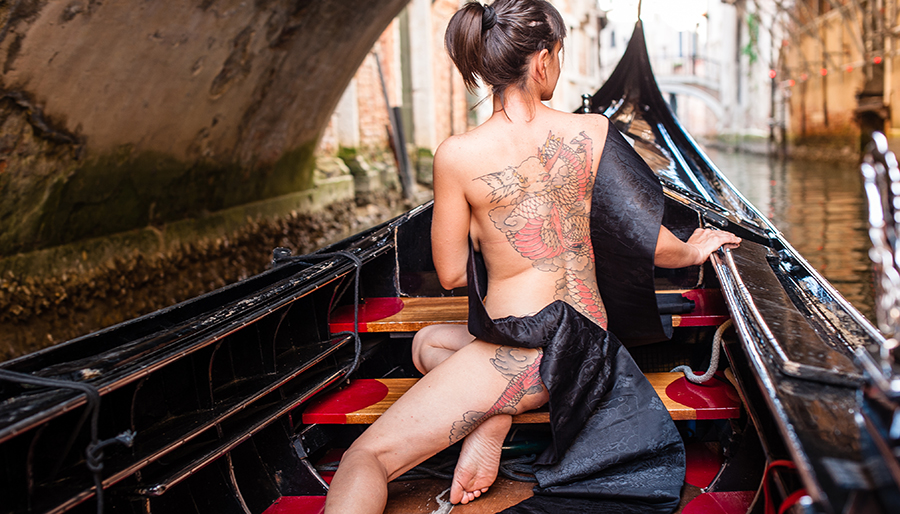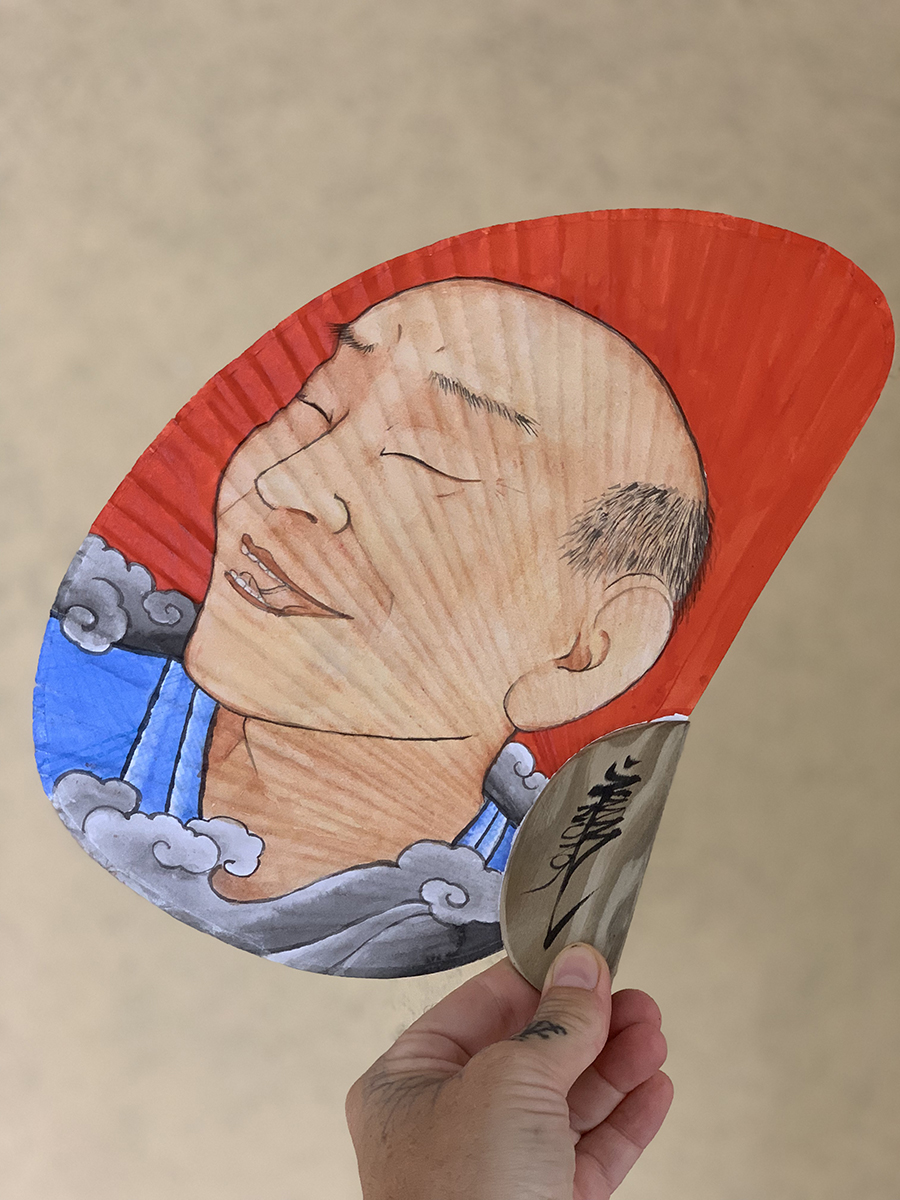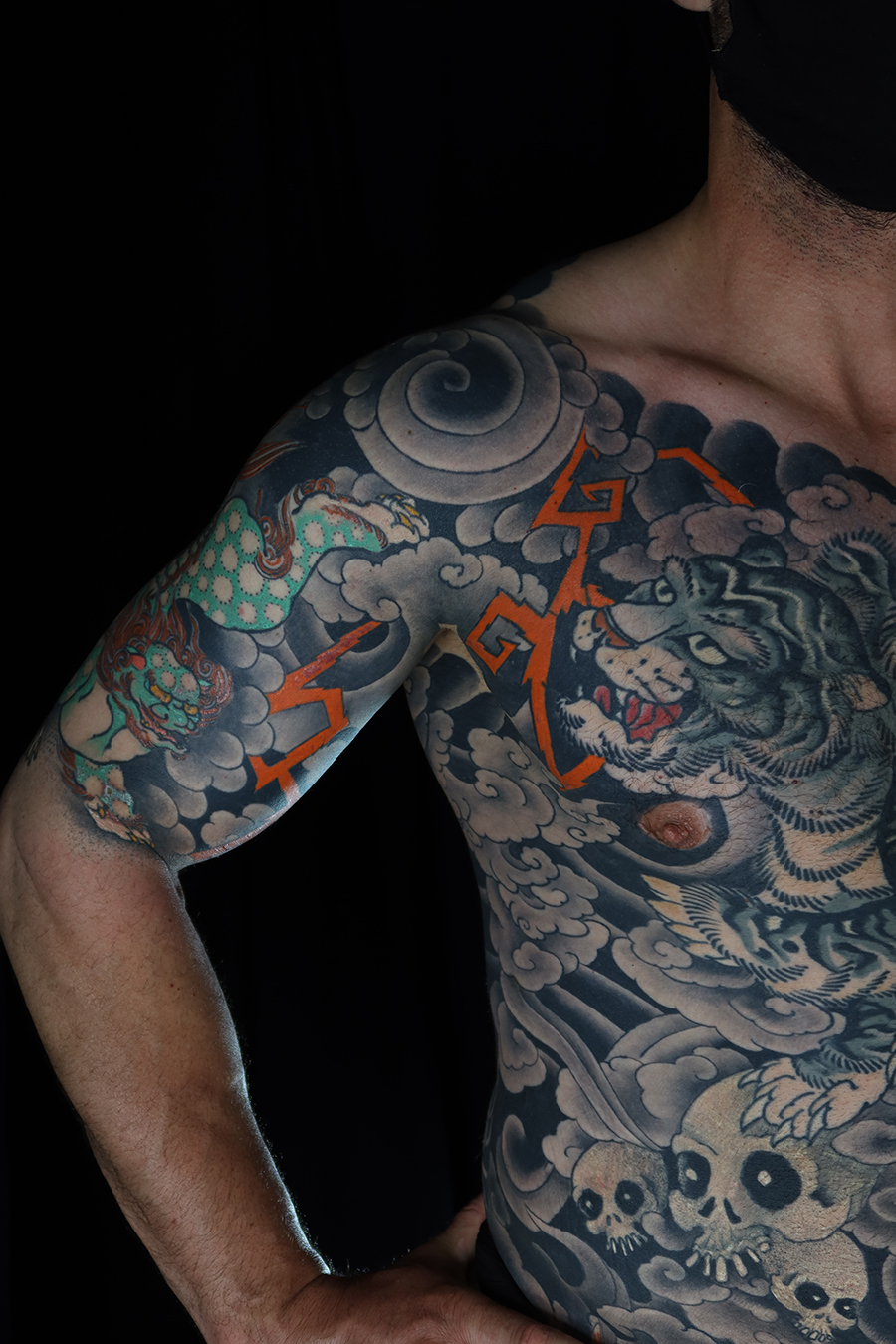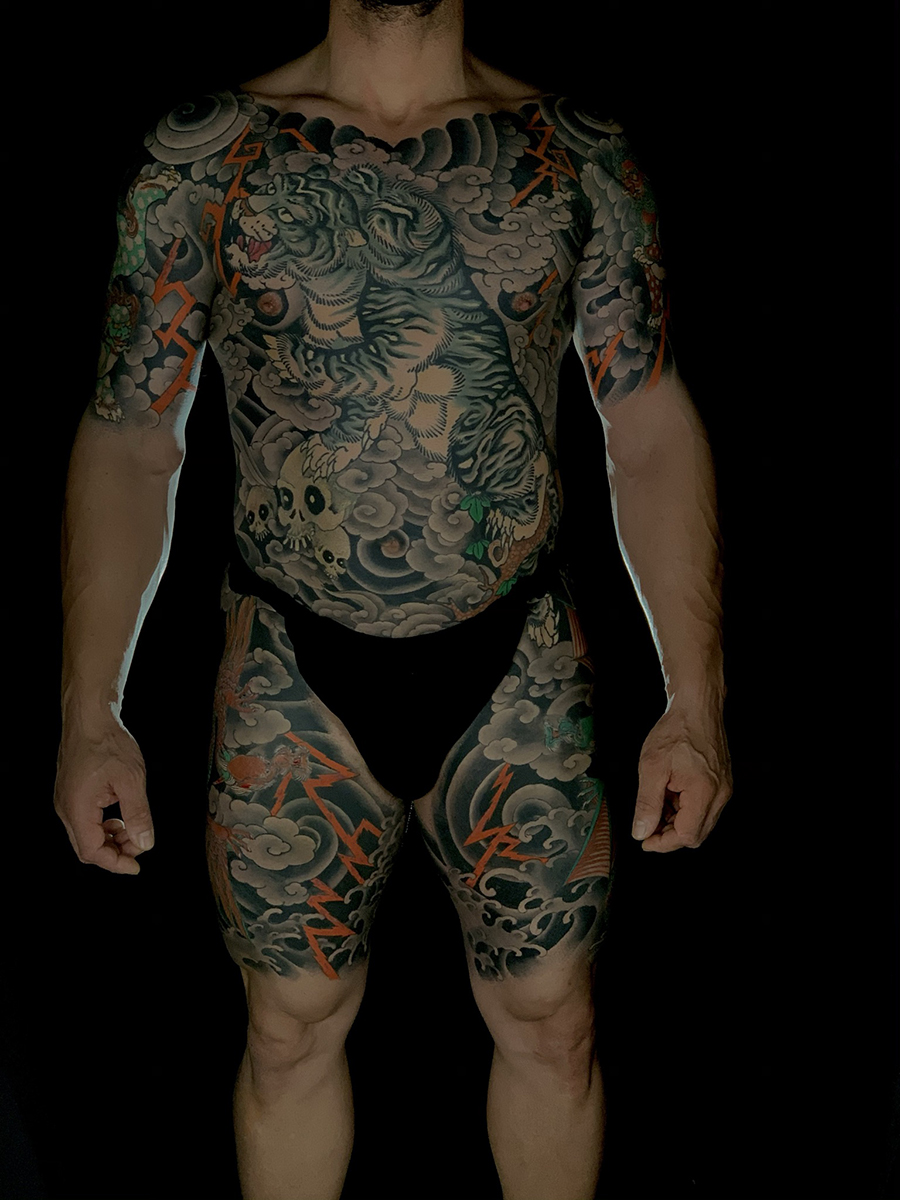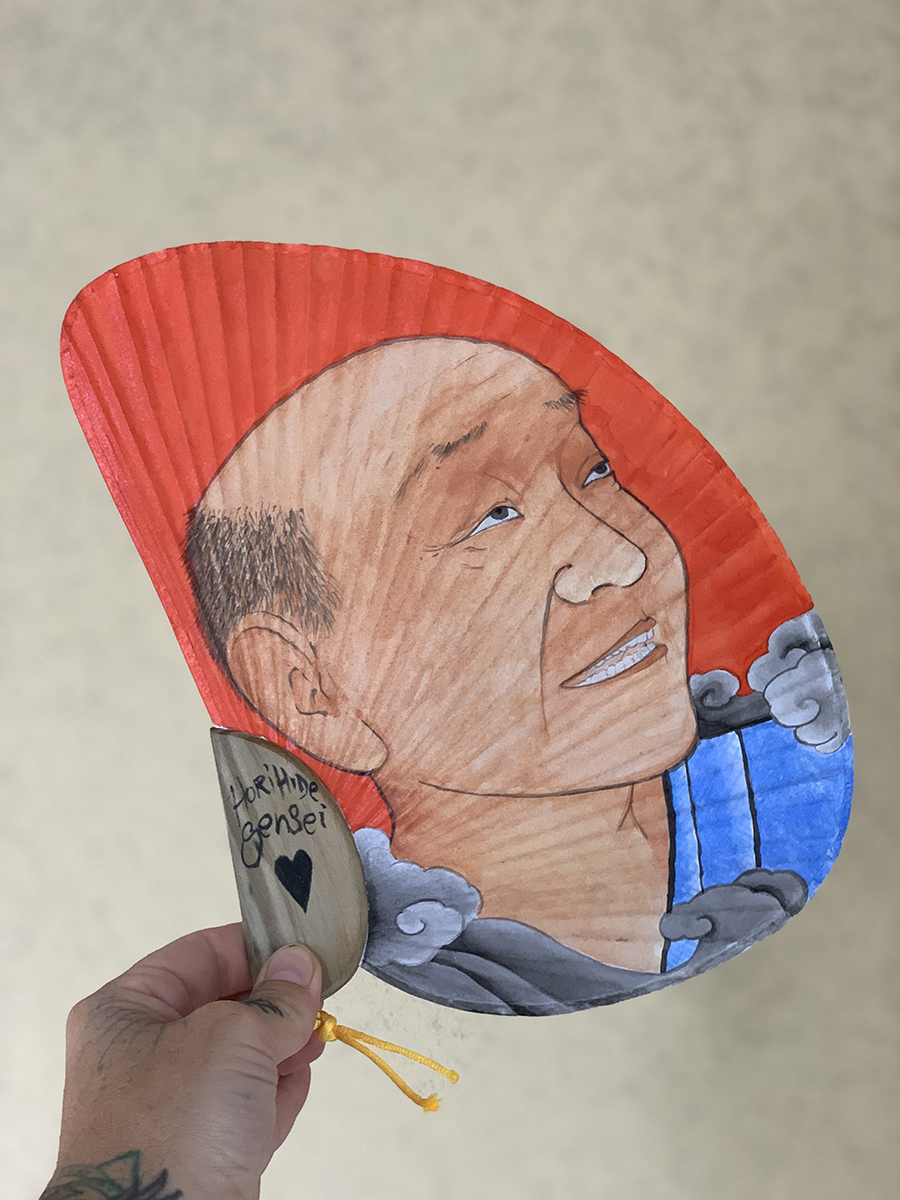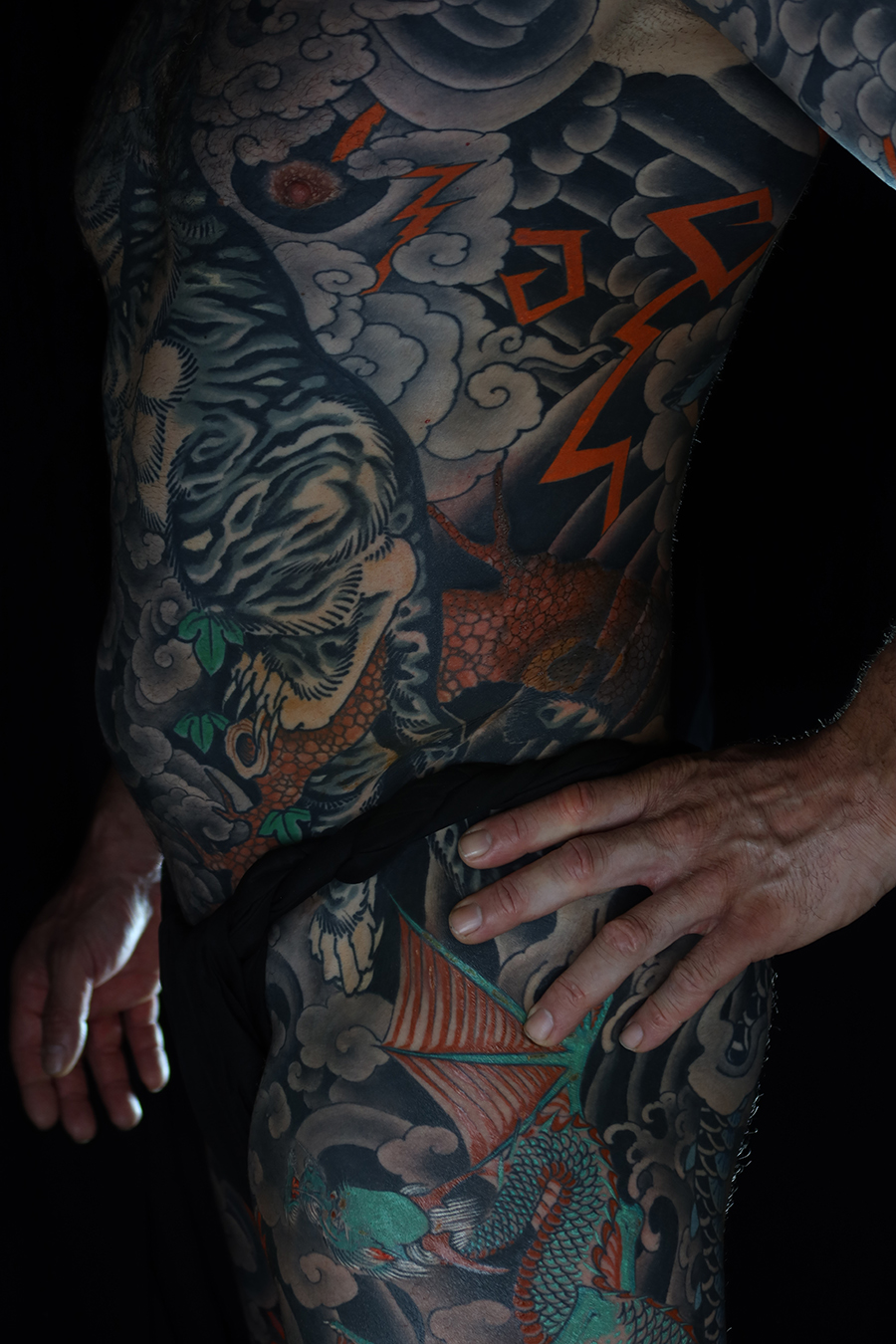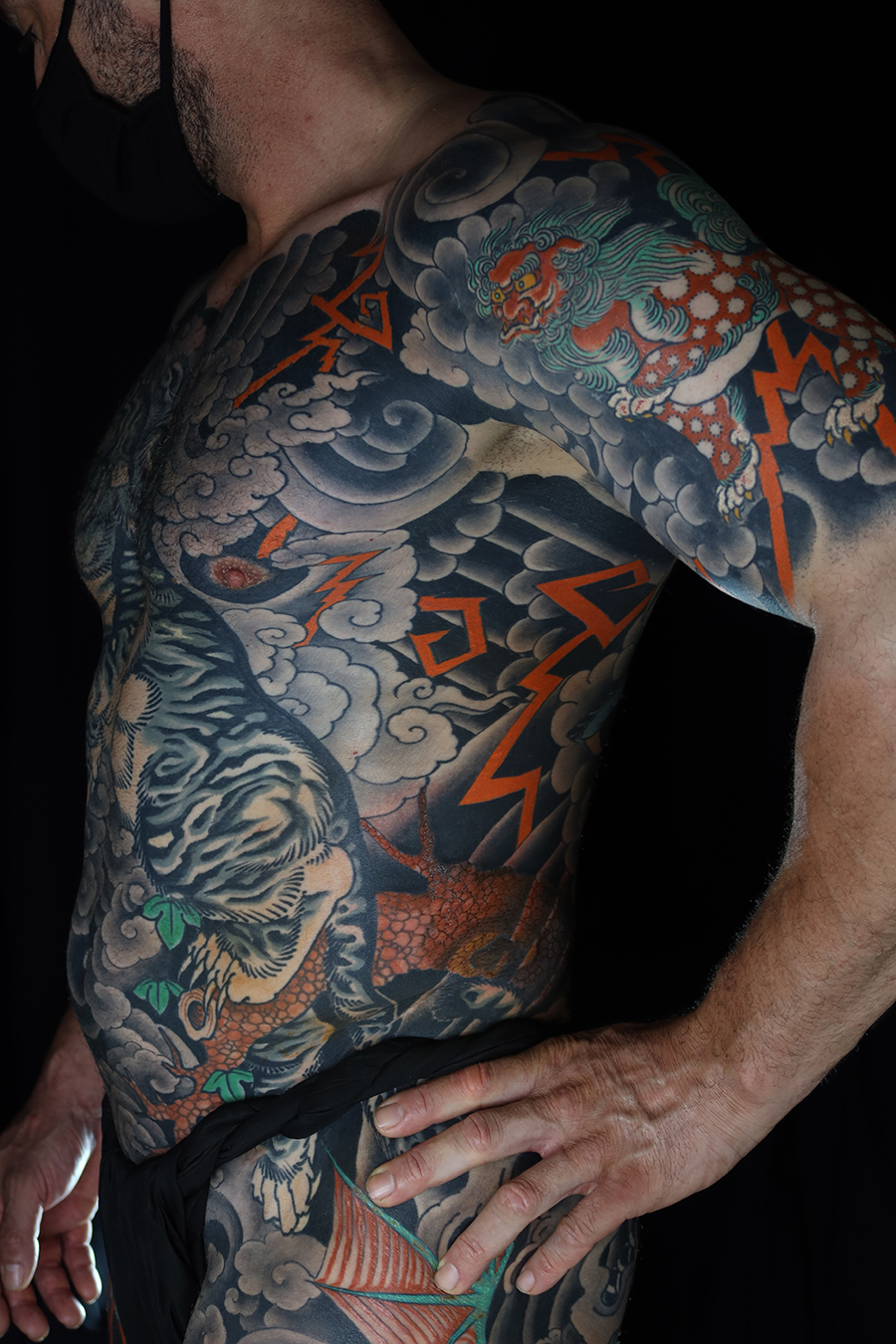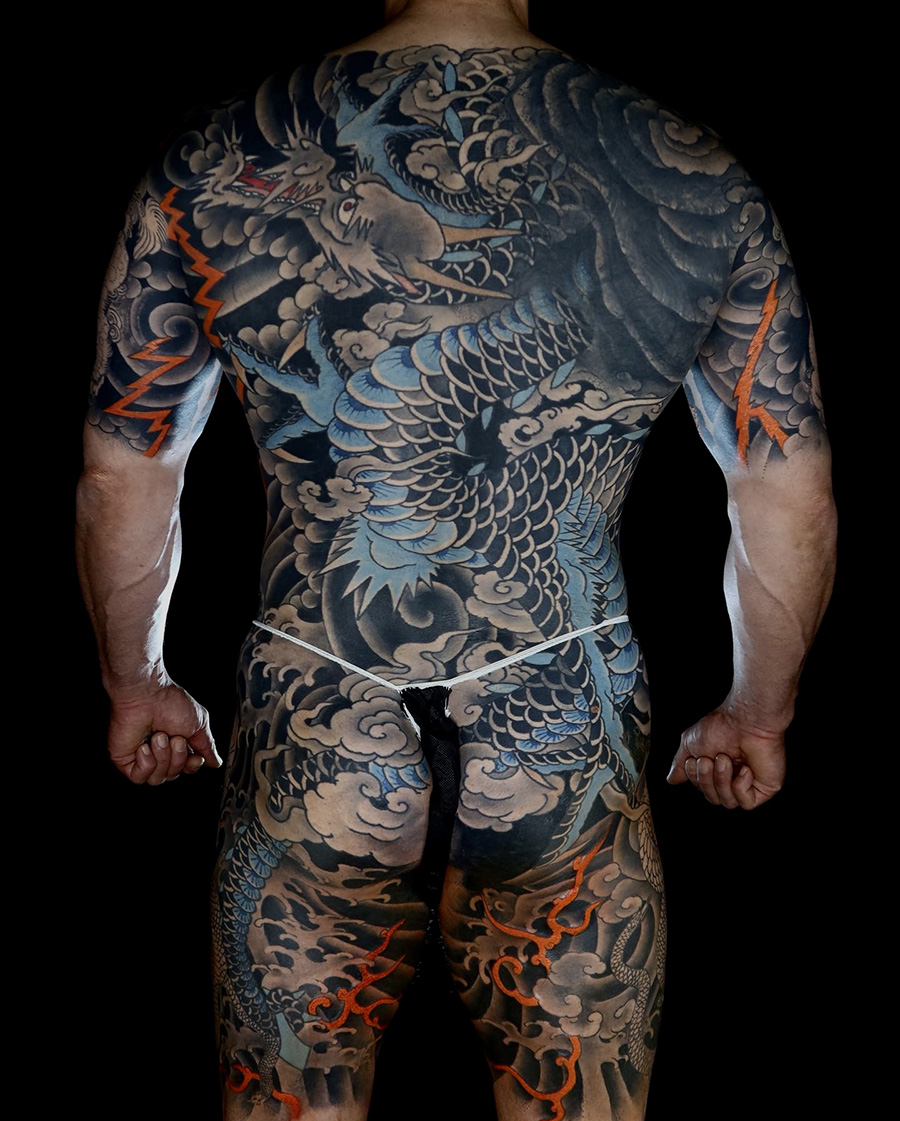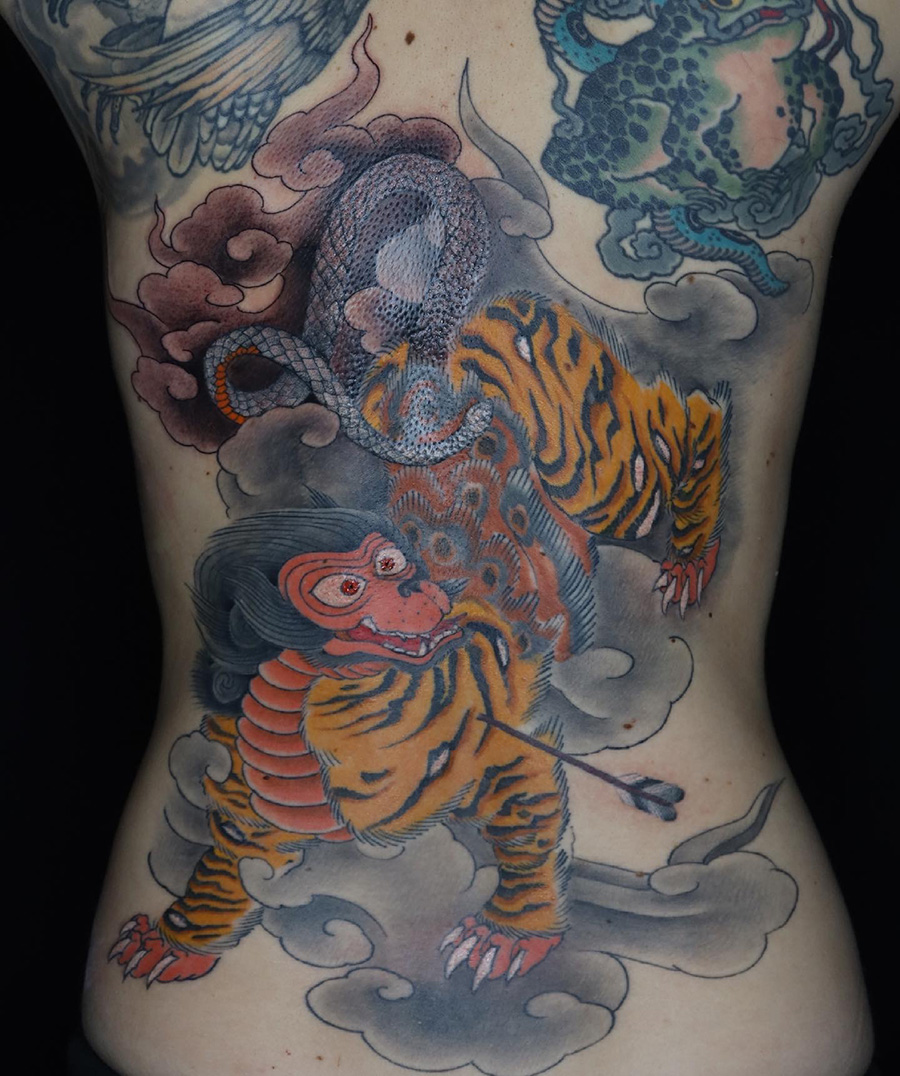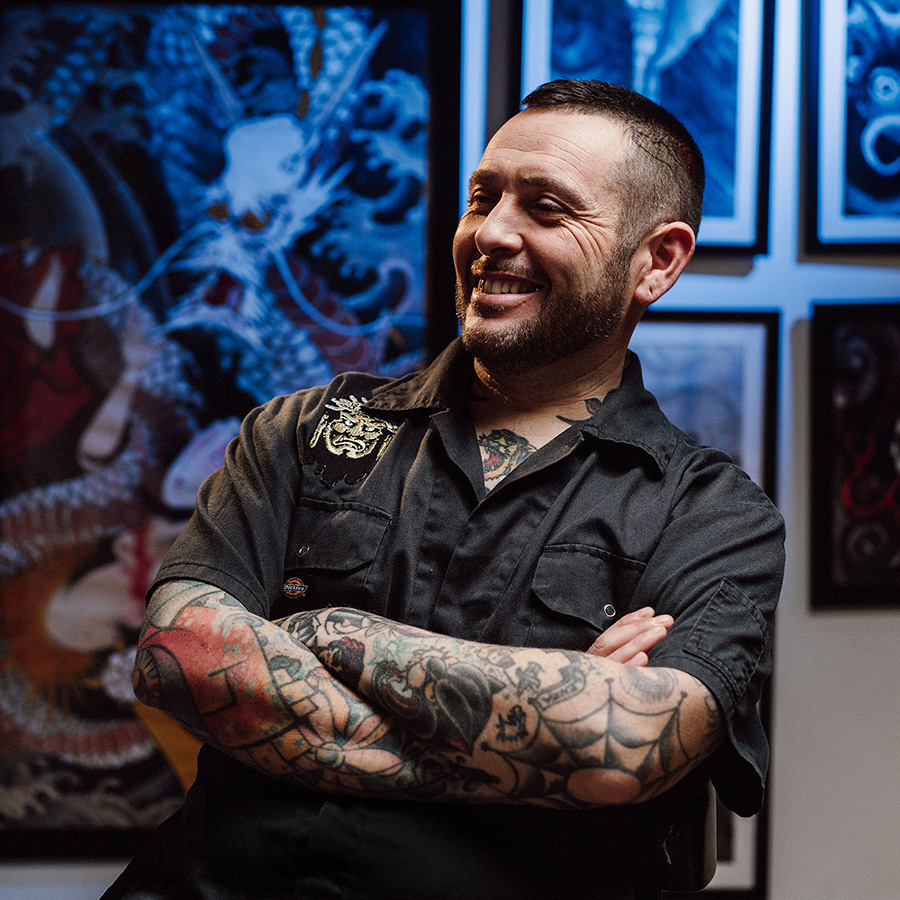Following the wake of the great navigator Marco Polo -a Venetian, just like him- who brought back wonders from China in the 13th century, Crez found his own source of wealth in the Japanese culture of tattooing. After grabbing his first machines when he was 17 and making his way through the different styles, he decided to specialise in Japanese’s. At 45 years old, Crez is still the consistent punk-rocker with convictions he used to be and more than ever as a tattooer, determined to perpetuate, from his studio Adrenalink in the city of Marghera near Venice, the conversation between West and East.


How popular is Japanese style today in Italy ?
Very popular. I was the only one doing Japanese tattooing only in 2003, now I think there are dozens of colleagues doing it. I was there as an avant-garde probably but I was sure it would explode one day.



How did you connect to Japanese culture ?
In Venice, we have a close relationship with Asia since 1250 because of Marco Polo. During the Second World war we were on the wrong side of history together with Japan and Germany. Then, all my generation in Italy grew up with manga, anime on TV. I was then not only curious about trying what I saw being part of the japanese culture, but the art of Japan made also sense to me. The very first drawings I was obsessively looking at when I was a kid were Japanese. That’s why when they tell me : « But that is not your culture ! » I usually reply : « Well, maybe it’s not your’s but it is definitely part of mine ! » I never played football in my life, I was doing Karate when I was 6 and kept doing that for long time. I love Italian art of course, but Japanese art speaks to me in a way no other country does. I admire Japanese culture, I think the eye of a foreigner can see things locals may consider obvious or irrelevant.



How was your first trip in Japan ?
It was in 2003. Besides being my first trip outside of Europe, it was for me like getting off in Mars. Everything was so different from Europe. I had the chance to go there and work, with my machines hidden in my suitcase -because of course tattooing was illegal in Japan- I had friends waiting for me there. I took tons of pictures, did lots of sketches of places depicted in the Ukiyo-e (japanese prints). You have to feel reality because otherwise your drawings will look like fake, and I don’t want to be an imitator of anybody. I want to be myself when I draw. Anuhow, it was a revelation. It was like having a puzzle in front of you with 10% of the pieces , then you get off in a place where the rest of the puzzle is. It will just take a lifetime to complete the image and this is all the fun part.



Along the way in Japan, is there a specific character who really stand out?
Among all the Japanese tattooers that I’ve got the chance to meet, Horihide from Yokosuka (a city in the south of Tokyo) was the best. This guy took Ukiyo-e designs to an other step, his own step, redrawing everything and make it a tattoo. He was between the first, in my opinion, to build the bridge between Ukiyo-e and tattooing. Because the other old tattooers of Japan that we know, they all either do Japanese prints on body, developed a different design forms - good or not- or they were painters who brought their techniques into tattooing. Horihide was a self-taught artist, he was the first who really decrypted the way Ukiyo-e are designed and make it specific to tattooing. I really admire his work for a long time. He was a strong influence for me.



More precisely, what did you learn from his work?
I love the balance his work has, the strength of his characters and their unity. It suits the customer’s body so perfectly that it seems like he doesn’t have tattoos, it looks like natural body. When tattoo stands too much on top of the person I don’t like it. He made 600 body-suits and this is an experience that people don’t care nowadays, they check on the Instagram the numbers of follower and that’s it. But it’s much more important how many people are wearing this huge stuff from you. You feel responsible for that. In Japan they tell you : « You have to feel responsible for your customers ». Yes, because you always have to be able to finish the tattoos you started. This is very professional, customers are the people that give you the possibility to be a tattooer, you must take the responsibility. And I learnt that there, because I had no teachers here. Everybody here was doing his own thing and some are good, some aren’t. In Japan it is a school that spreads trough generations, every artist contribute to the evolution of his Ichimon (family), the results one artist gets are the work of generations before him, this people live in the work of the new generation.



Did he help you through your study of the japanese tattooing?
Yokosuka Horihide took my drawing and corrected them, like a master would do. He gave me some tips to improve my dragons too, things that really changed my life. For example, he told me : « Your dragon body is a snake body, and it’s wrong ». The lines of the shape of the dragon’s body should not be parallel and look like a tube, they should move. He explained me also the choice of colours, things that are different in reality but we don’t have to give a fuck because it looks good on the body. He speaks a lot about the shape stuff should have, about how much portion of the chest the tattoos should cover, how many colours, how many details… It changed my work and made it grow, an adult work. He was my judgement. I enjoy his critiques and the appreciation when I was doing it right.



Talking about dragons, it is a design that you specifically like, why?
It’s a mixture of many techniques you want to learn when you want to draw fluently. When I read the life of Hokusai, I read that he was drawing a karajishi (chinese lion) every morning, so I do it with dragons. Almost every morning I do a sketch, a head, the claws, a part of the body. It’s a design which gives good energy when you do it. The reason why my dragons often have eyes crossing comes from the Ukiyo-e tradition and for example when you want to show strength for Kabuki actors, you normally cross his eyes. Sometimes it also has a little irony and a little craziness in the design of dragons you can see in the temple. And a dragon is a crazy force, it’s a strength of nature. Dragons make perfect tattoos, they are good to place everywhere on the body, they’re good in all sizes.



From the beginning you were more interested in the classic look of traditional Japanese tattooing than the European modern version, for example of Filip Leu, that even young Japanese tattooer were looking at…
All my friends in Japan were telling me: « You’re not doing japanese tattoo, you’re doing your style ». And I was wondering why they would tell me so. So when I went to Yokosuka Horihide and showed him my work, he said : « This is real japanese style ! ». ! My friends were doing the “Filip Leu style”, they were more impressed by Mick (ex-Zürich) and Filip than the traditional style of japanese tattooers. When I saw Ivan Szazi’s work I was really impressed I saw another guy doing old-school stuff ! It meant that other people understood this taste. The difficulty was to make the people understand the designs on paper, before putting it on skin, that would not look as charming as the 3D dragons of the time. It’s less of a cartoonist kind of rework. This is more serious and elegant for a tattoo in my opinion. This is a word that Horihide told me : « Elegance ». It is the most important thing in Japanese tattooing. In Japan they call it « iki ». It is a mixture between elegance and manner. I really understand that.



As an Italian tattooist specialised in Japanese tattooing, what would your reaction be if one day you were told that Japanese tattooing should only be done by Japanese people?
People can say whatever they want ! (laughs) I let my works speak for myself. You want to tell me I don’t exist ? I’ve worked and travelled across Japan every year since 2003, I did a lot of research on the field, there was very little publications in the West, internet wasn’t the source of reference it is today, so the only way was to experience first hand and I did it, taking my risks and getting my reward: knowledge. The same people that says westerners shouldn’t do Japanese style tattoos are the one who think Japanese shouldn’t wear blue jeans, play the violin, bake pizzas… cultural contamination make our society stronger.



You’re painting besides tattooing, what influence does it have in your creation process ?
It’s fundamental. I started painting as a tattooer like everybody else, by painting flash. Tattooing needs concentration and it’s physically very demanding, you have to wrap your fingers around the grip and be steady with the machine while you stretch the skin. Because you have to take care of a lot of parameters : there is a tension. The paintings -like the dragons- that I do on huge scenography paper are much more of a relaxing feeling. This opposite energy counter balances the energy for tattooing, for your body and your mind. I like to give the idea of a painting in my tattoos. For example I use a lot of dotwork in my tattoos, I like the effect of sumi painting and try to replicate aspects of this technique on human skin.



You opened your first shop in 1997, you were 21 years old. How do you look at tattooing now it has evolved ?
Tattooing, in the beginning of the 90’s, was a kind artistic revolution. People who weren’t interested in contemporary art were much more attracted to the tattoos and their iconography. Tattooing has influenced fashion, graphic design, and has really changed the contemporary imagery. Tattooing is a folk art, it speaks to the people, it’s very down to earth, something that I feel was needed. I’m happy when I see people discussing about art and paintings and feels the beauty behind it. Tattooing has been the key to understand art for many of us. Nowadays, with big company investing in tattoos, things are changing again, the art of tattooing is loosing its magic, we risk to bring all the evolution back to darkness… It’s not so important how good you can become technically. You might be the best in the world but tattooing is a form of communication. If your tattoos have nothing to say, then your mission is failed. People understand that, moreover because they’re going to carry that on themselves. Nobody wants to carry a constant reminder of an idiot on their own skin.



You have strong political opinions, how does it affect your work ?
I am an anarchist, I’ve always been. My philosophy is based on the respect of others and myself, of course. I cannot stand people that pretend to disrespect others. I have been singing in a Oi! Band, therefore I don’t want to make tattoos on boneheads (nazi skins) but I’m happy to know they would love to get tattooed by me (laugh). It just won’t happen. Tattooing is a very complex and intimate procedure, we have to spend a lot of time together. How can we make something beautiful if we dislike each other’s ? Why would you get tattooed by someone you hate? The world has changed a lot in the last years, my opinions might be strong, but what I see around me is people getting more and more extreme on their positions, hate has become “trendy”. I enjoy political conversation with open minded people, it’s always a lesson for me. But if your politics include physical elimination of minorities, for me, you don’t deserve to be listened whatever flag you rise. I respect my enemies, I just don’t make tattoos on them. It is also a form of respect. CONTACT : http://www.adrenalinktattoo.com https://www.facebook.com/adrenalink/ https://www.instagram.com/crez_adrenalink/





















